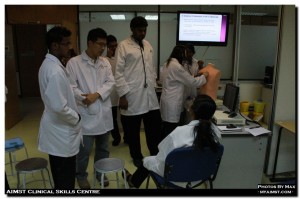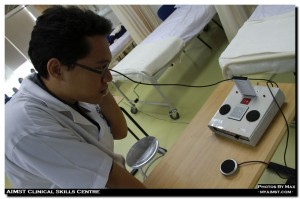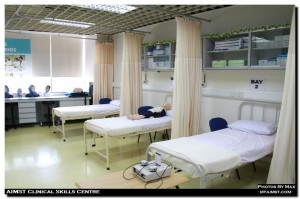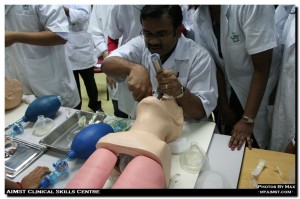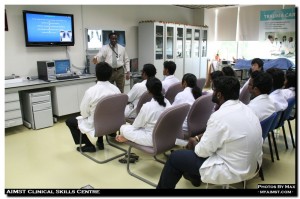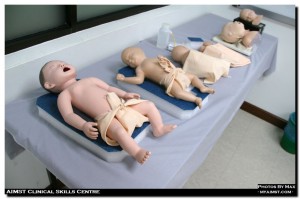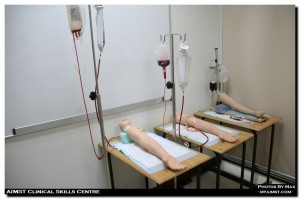Table of Contents
Introduction
In recognition of the ever increasing numbers of students in Medical Schools coupled with a lack of patients to practice clinical skills on and the demands of the Health Care System, there has been a need to evolve innovative ways to improve the clinical competency of the practicing doctor.
In this regard, Laboratory Clinical Skills Training has been found to be useful in exposing and improving the clinical competency of the young doctor prior to Clinical Ward Training. This spiral process also takes into consideration local medical needs.
Benefits
– Enables Undergraduate Students to perform procedures under supervision
– Promote standardization
– Encourage students to practice the skills as and when possible
– Improves the clinical competency.
Advanced simulation
The use of Advanced Simulators for training:
– Provide hands on experiences for both Under graduate and Post graduate Students to practice casualty simulation exercises
– To learn how to manage a number of medical scenarios that they would be confronted with during their careers as medical doctors.
Clinical Skills
Clinical skills available in:
CARDIOVASCULAR SYSTEM
– Physical examination of the Precordium
– Listening to Heart Sounds (normal & abnormal)
– Systemic approach to reading a chest radiograph
– Determination of Cardiothoracic ratio
– Examination of Peripheral pulses
– Blood pressure Measurement
– Central venous pressure Measurement
– Electrocardiogram recording and interpretation
– Venepuncture & Setting up an IV line
– Use of Scalp vein needles
– Cardiopulmonary Resuscitation
– Defibrillation techniques
RESPIRATORY SYSTEM
– Physical examination of Chest
– Listening to Breath sounds (normal & abnormal)
– Measurement and interpretation of respiratory parameters ( Spirometry, Peak flow)
– X – ray interpretation – systemic approach
– Airway management skills
GASTROINTESTINAL SYSTEM
– Physical examination of Abdomen
– Rectal examination
– X – ray contrast procedures & CT scan
– Nasogastric tube insertion
MUSCULOSKELETAL SYSTEM
– X – ray of bony structures
– lntra muscular & Subcutaneous injection
– Surgical suturing and knot tying
– Stump bandaging
REPRODUCTIVE SYSTEM
– Examination of pregnant abdomen
– Mechanism of parturition
– Vaginal examination
– Pap smear sampling
– Breast examination
– Performing episiotomy and suturing
GENITOURINARY SYSTEM
– Female catheterization skills and bladder washout
– Male catheterization skills
– Prostate examination
– X-ray:KUB,IVU&IVE
CENTRALNERVOUS SYSTEM
– Examination of Sensory system
– Examination of motor system
– Examination of higher functions & special senses
– Examination of cranial nerves Performing a Lumbar Puncture
– Fundoscopy
ENDOCRINE SYSTEM
– Examination of Thyroid mass
– Measurement of Blood glucose
COMMUNICATION SKILLS
– History taking ( role play by students or with real patients)
SIMULATION WARD
– Physical examination procedures using student volunteers or real patients.
OTHER SKILLS
– Techniques of surgical scrubbing.
– Using a sterile glove & gown.

